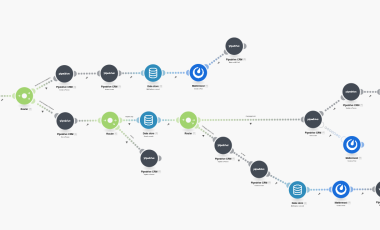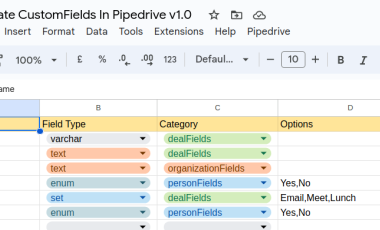How Does Omnichannel Digital Strategy Improve Digital Publishing Experience?
The Omnichannel Marketing approach has become imperative for modern digital publishing businesses. The most significant benefit of this approach is that it allows the sync of inventory data and consumer data in a centralised system.
It is an excellent way to create actionable digital content across various customer journey touchpoints. It works by coursing through the browsing behaviour of customers, as they switch back and forth between publications, webpages, apps, Facebook, YouTube or Instagram links, and payment gateways.
Optimising content for numerous devices and channels is not a difficult task. It is a surefire way to create a coherent user experience. This article explores the aspects and methods of omnichannel publishing in full detail.
Benefits of Omnichannel Digital Marketing Strategy for Digital Publishing
The fast-paced digital age pushes marketing strategies to evolve rapidly for the digital publishing industry. Earlier, brand awareness was a lot about creating visual perceptions through a gamut of logos, layouts, captions, etc. Things have changed over five to seven years. Nowadays, user-centric narratives are coveted. Digital content users today can and do use multiple devices, social media, web apps and websites to pursue a single online purchase. The simplicity and personalisation of usability during these interactions impact the reputation of a brand and its outreach.
Applications of Omnichannel Marketing That Would Work for Digital Content Publishing
The marketing strategy follows the logic that once a user clicks an online ad or visits a website, it starts the customer engagement process. From this point on, each of their social media platforms becomes a tool for delivering the brand message. Each channel is updated with the user’s most recent interaction with the brand. Users can share the links, post on their social media, make it a part of their vlogs and blogs, and so much more. Below are some of the applications to go with the logic.
1. Defined User Experience for Different Consumer Touchpoints
The idea is to provide acceptable content that brings customers closer to their needs. A good example would be Google Chrome, wherein user data such as history, activity log etc., are automatically synced across all devices. Users can be logged-in to their Google accounts across mobiles, tabs and laptops interchangeably. So if they were halfway through performing a purchase through the mobile, they could complete the transaction from another device at ease.
2. Impart Strongest Applications and Microservices with a Headless CMS
The concept of Headless CMS is a form of the back-end-based content management system (CMS). The technology stores a single source of data, providing users with a centralised repository for various applications and microservices. The content repository is the “body” segregated or divorced from the presentation layer or “head”.
As a result of this technology, all digital content can be published without backend code and design. It could empower the content to be simply re-optimised and re-published repeatedly to accustom to channels, devices and users. It would give the content team more autonomy in publishing, optimising, and re-editing content without having to consult the developer team at every point. It also means they may link with various business systems, like AI tools, web analytics, CRM systems, translator apps, A/B testing apps, etc.
3. Seamless Payment Gateways
The online payment transaction between the shopper and the retailer is automated through payment gateways. Its main feature is the safe transmission of transaction data to banks. It is imperative for eCommerce and B2B businesses to have a seamless payment gateway to retain customers. It can be crucial for the Publishing Industry for the same reason. Technology heavily influences consumer decisions and how quickly and easily customers can complete a transaction. Today, customers’ journeys are not limited to selecting a product and buying them. It also includes researching the products, looking at reviews, watching YouTube videos, and comparing prices. New digital payment methods are introduced frequently, from eWallets to pay-later apps. Using omnichannel publication makes more sense to prioritise easy payment, regardless of site traffic.
How Omnichannel is Different from Multichannel Marketing
The main distinction between omnichannel and multichannel marketing is handling consumer engagement. For the most part, the omnichannel outreach focuses on improving the consumer journey omnipresently. On the other hand, multichannel outreach involves multiple channels and user interactions.
Omnichannel Can Be Interpreted as “All for One”
Omnichannel marketing is centred on the customer, not the channel. The primary goal is to make the shopper experience as simple as possible, which requires consistent involvement regardless of where or how a shopper interacts with each channel.
Multichannel Can Be Interpreted as “One for All”
Multichannel marketing distributes content across multiple channels or platforms and doesn’t target the customer particularly. The idea of the process is to target channels for promotion or call to action. A channel could be a webpage, a web app, social media, email or offline brick-and-mortar location. The channels’ activities cannot be combined. Thus the application is siloed.
Clearing the generic doubt : Omnichannel and Multichannel marketing are not the same.
Omnichannel indeed entails using multiple channels. However, the result differentiates the logic.
How To Implement Omnichannel Digital Marketing Strategy for Digital Publishing?
Businesses need a high-quality omnichannel strategy that explains using consumer data to combine content across many channels. Below are some of the key points to justify the implementation:
- Using more contextual content focusing on relevance and simplicity over quantity
- Explore user-centric narratives, hashtags, geo-tagging and the right timing to define consumers’ needs across all the right touchpoints.
- Use content optimisation with organic SEO rules to gain Google Ranking.
- Personalise content aspects to create optimised design values.
Taking a final piece of advice, always consider the aesthetic aspect of your content. How will your content appear on various platforms and devices with varying screen widths? How does it seem on mobile devices? How would it apply to different social media profiles? Remember that the Content is King here. And it must be able to go everywhere and modify automatically.
Resources:
- Ankita Kaushik, MoEngage Blog (online), “Omnichannel Marketing: A Complete Guide for 2022 and Beyond”. Published 2021-12-17. Link accessed on January 03, 2022.
- Amala Justy, Quintype Blog (online), “Digital Media: Omnichannel Content Strategies”. Published 2021-08-23. Link accessed on January 03, 2022.
- Sonja Kotrotsos, IT Pro Portal (online), “Omnichannel Publishing: The New Frontier”. Published 2020-08-07. Link accessed on January 03, 2022.
- Brent Heslop, CONTENTSTACK (online), “Omnichannel Publishing: The New Frontier”. Published 2020-06-19. Link accessed on January 03, 2020.



